1988 Toyota Supra Repair, Service & Tires
Get Started
Complete Auto Care for Your 1988 Toyota Supra
-
TIRES FOR YOUR 1988 Toyota Supra View Tire Info GET TIRE PRICING
-
REPAIR FOR YOUR 1988 Toyota Supra View Repair Info SCHEDULE REPAIR
-
MAINTENANCE FOR YOUR 1988 Toyota Supra View Maintenance Info SCHEDULE MAINTENANCE
-
OFFERS FOR YOUR 1988 Toyota Supra Limited Time Tire Offers VIEW ALL COUPONS
1988 Toyota Supra Tires
Recommended Tires | Tire Information
1988 Toyota Supra Tires Sizes, Speed Ratings, and Inflation
Not sure about your 1988 Toyota Supra tire size? Use the following chart to find information on tire size, speed rating, and inflation.
| Trim Level | Speed Rating | Inflation in PSI F/R | Tire Size |
|---|---|---|---|
| 1988 Toyota Supra Base* | V | 28 PSI/28 PSI | 225/50VR16 |
| 1988 Toyota Supra Base* | None | 36 PSI/36 PSI | 205/55R16 |
| 1988 Toyota Supra Turbo | V | 28 PSI/28 PSI | 225/50VR16 |
|
1988 Toyota Supra Base* Speed Rating: V Inflation F/R: 28 PSI/28 PSI |
|
1988 Toyota Supra Base* Speed Rating: None Inflation F/R: 36 PSI/36 PSI |
|
1988 Toyota Supra Turbo Speed Rating: V Inflation F/R: 28 PSI/28 PSI |
* Note: these models have different tire sizes depending on vehicle options.
Recommended Tires for Your 1988 Toyota Supra
What tires are best for a 1988 Toyota Supra? Check out the following tire brands and types.
 Potenza RE71RS
Potenza RE71RS
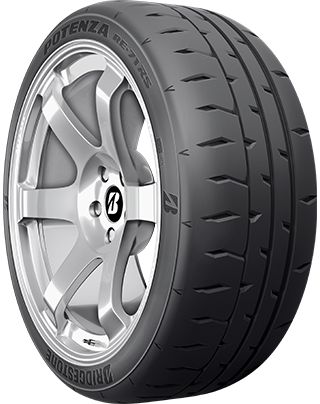
- No warranty
- Summer
- Performance
 Blizzak WS90
Blizzak WS90
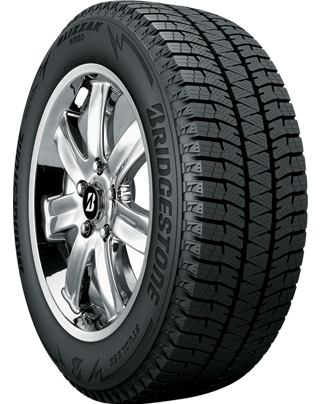
- No warranty
- Winter
- Winter
 DriveGuard Plus
DriveGuard Plus
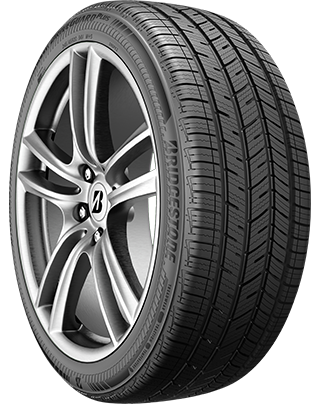
- Platinum Pact Limited Warranty
- All-Season
- Performance
 Ecopia EP422
Ecopia EP422
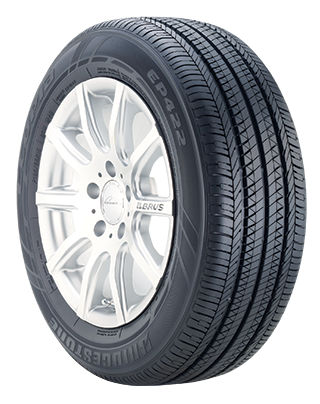
- Platinum Pact Limited Warranty
- All-Season
- Performance
 Ecopia EP422 Plus
Ecopia EP422 Plus
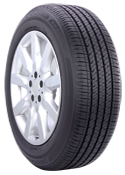
- Platinum Pact Limited Warranty
- All-Season
- Performance
 Potenza Sport
Potenza Sport
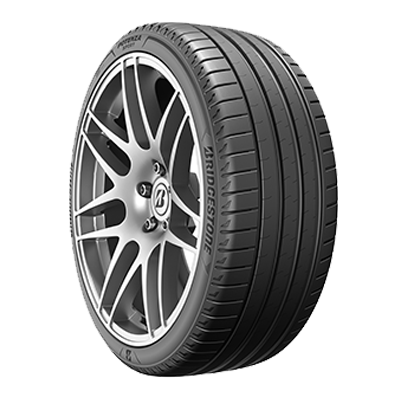
- Platinum Pact Limited Warranty
- Summer
- Performance
 Potenza Sport AS
Potenza Sport AS
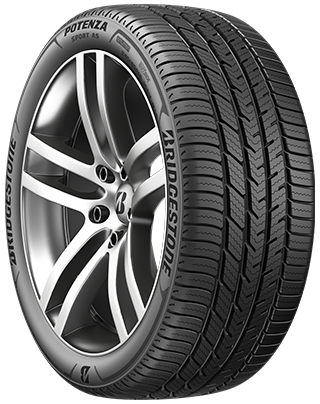
- Platinum Pact Limited Warranty
- All-Season
- Performance
 Turanza EL42 RFT
Turanza EL42 RFT
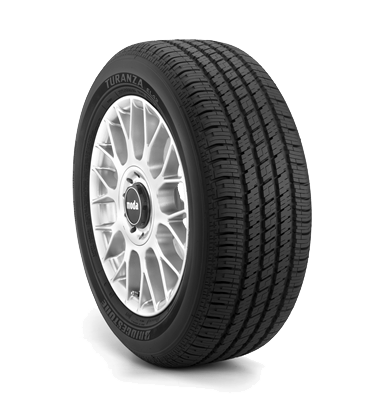
- Platinum Pact Limited Warranty
- All-Season
- Performance
 Turanza QUIETTRACK
Turanza QUIETTRACK
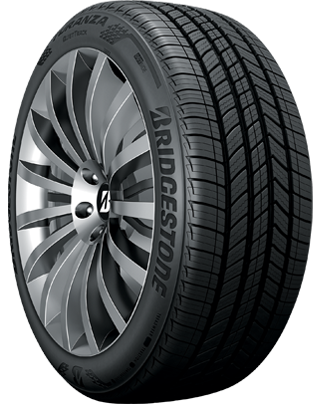
- No warranty
- All-Season
- Performance
 Turanza T005
Turanza T005
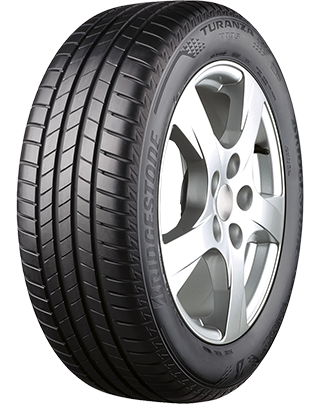
- No warranty
- Summer
- Performance
 WEATHERPEAK
WEATHERPEAK
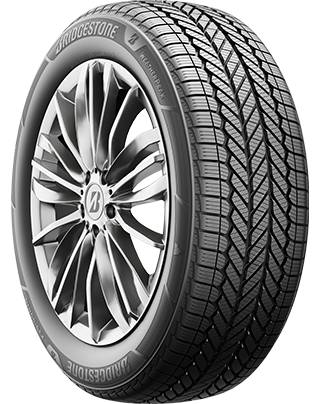
- Platinum Pact Limited Warranty
- All-Season
- Passenger Tires
 Firehawk Indy 500
Firehawk Indy 500
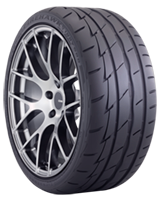
- Gold Pledge Limited Warranty
- Summer
- Performance
 ALL SEASON
ALL SEASON
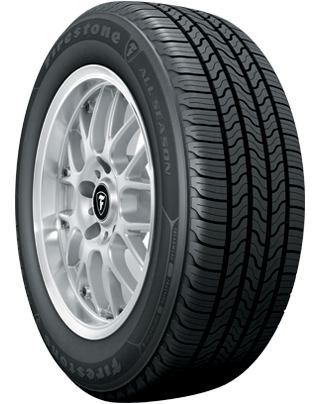
- No warranty
- All-Season
- Passenger Tires
 FT140
FT140
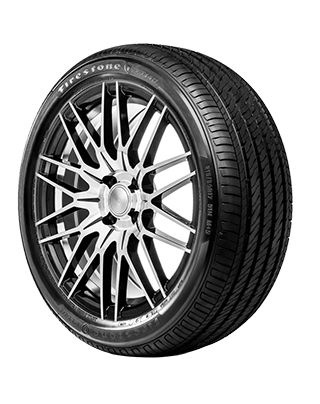
- No warranty
- All-Season
- Passenger Tires
 WEATHERGRIP
WEATHERGRIP
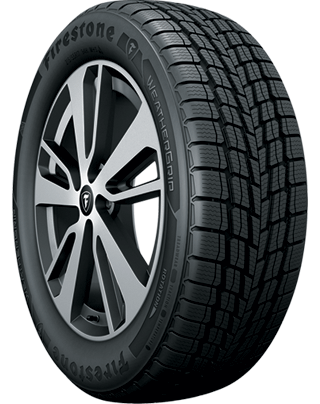
- No warranty
- All-Season
- Passenger Tires
 Winterforce 2
Winterforce 2
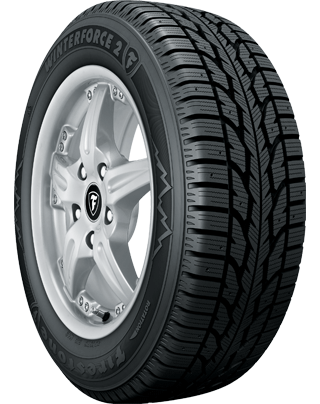
- No warranty
- Winter
- Winter
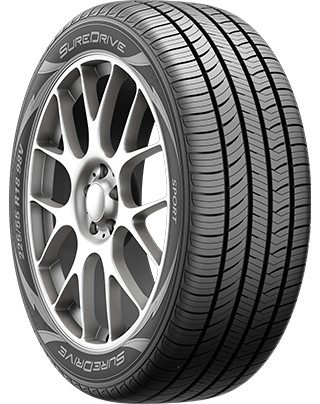
- No warranty
- All-Season
- Performance
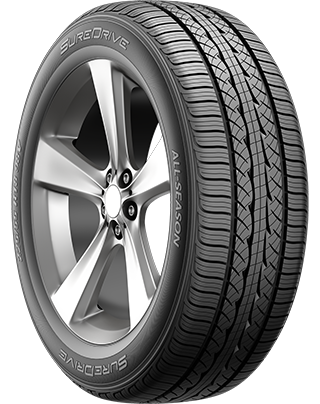
- No warranty
- All-Season
- Passenger Tires
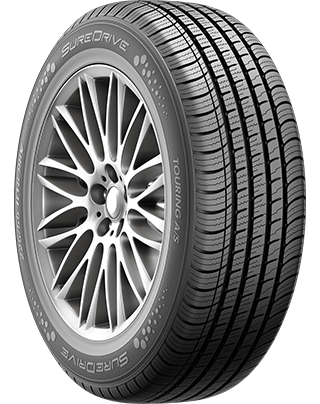
- No warranty
- All-Season
- Passenger Tires
 PROXES R1R
PROXES R1R
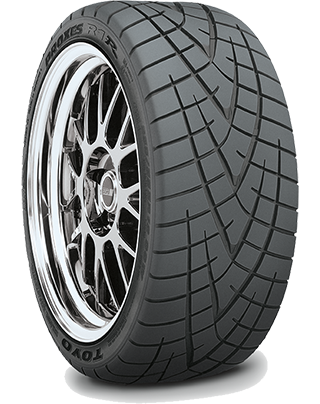
- No warranty
- Summer
- Performance
 PROXES Sport A/S
PROXES Sport A/S
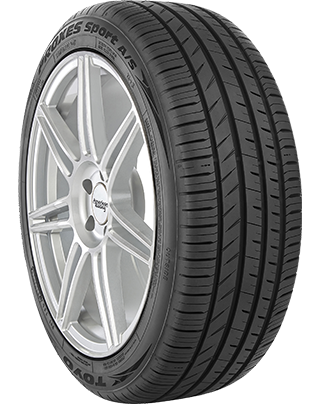
- No warranty
- All-Season
- Performance
Choosing 1988 Toyota Supra Tires
Beyond the correct tire size, you also want to think about a couple of other things when getting new Toyota Supra tires like how and where you drive, and how much you want to spend. Think about where you live (countryside vs. city vs. mountains) and the kind of unexpected weather you're likely to experience when evaluating your driving conditions. It's not uncommon for drivers in states that experience all four seasons to buy more than one set of tires. one set for winter, one set for summer. Other drivers buy one set of all-season tires instead. That way they don't have to return to the tire shop and their vehicle is always ready for sun, rain, and light snow!
Next, consider your driving style. If you're a diehard off-roader, you have very different tire needs than a highway commuter who doesn't leave the paved path. Talk to a tire technician at Firestone Complete Auto Care for help choosing the best tire for you, or start shopping for Toyota Supra tires online.
Installing Toyota Supra Tires
Firestone Complete Auto Care installs more tires on more cars than most other companies. We're your one-stop shop for tire installation, rotation, and ongoing maintenance! We make it easy to buy new 1988 Toyota Supra tires online and book an installation appointment at the same time.
1988 Toyota Supra Tire Questions
-
Why does Toyota tire inflation matter? Even a tiny decrease in tire pressure could impact your safety and fuel economy. Maintaining proper tire pressure can help increase fuel economy, improve braking time, and boost tire lifespan.
-
What do the numbers on my Toyota Supra tires mean? Your tire sidewall gives you information about load carrying capacity, speed rating, treadwear, traction, and tire size. Talk to one of our tire technicians to learn how to read the numbers on your tire!
-
How do I check the tread depth on my Toyota tires? Stay on top of your tire tread depth to help avoid a dangerous drive. You can check tread depth with a penny. Hold the penny so that Abraham Lincoln is facing you, then place your penny into a tread groove upside down. If you can see the top of Abe’s head, your tread is shallow and it might be time for new Toyota Supra tires. Grab a penny. Hold the so that Abe Lincon's head is facing you and his hair is pointing toward the ground. Then, place the penny into a tread groove. If you can see the top of Abe’s head, your tread is shallow and it might be time for new Toyota Supra tires.
Repair Services for Your 1988 Toyota Supra
How do I learn more about auto repairs? Click on a service below to read about the types of Toyota Supra repairs we do at Firestone Complete Auto Care.
1988 Toyota Supra Repair Information
For most drivers, the words “car repair” don’t exactly spark excitement. But we work to provide you with a different experience at Firestone Complete Auto Care. When you come to us for 1988 Toyota Supra repair services, rest easy knowing that your Supra is in capable hands. We'll work to evaluate the scope of repairs needed and explain your options. We value your trust, so we recommend only the repairs we think are necessary for your safety on the road.
How Much Are Toyota Supra Repairs?
Several factors can affect the cost to repair your 1988 Toyota Supra, including which repairs are needed, the cost of any replacement parts, the labor involved, and the state you live in. No matter what state you’re in, be sure to look through our offers and online coupons for repairs.
A few different aspects can influence repair costs for your 1988 Toyota Supra, like
Questions About 1988 Toyota Supra Auto Repairs
-
Can scheduled maintenance help me avoid repairs? One of the best ways to prevent 1988 Toyota Supra repairs is by staying on top of your Toyota maintenance schedule. This schedule is written by the people who made your vehicle and they know best how to keep it running smoothly.
-
What's wrong if something feels 'off' in my Toyota? No, we’re not talking about finding the best jams on the radio! You know your car best, and you’re the first person who will notice if something doesn’t feel right (like new smells, sights, or sounds coming from your car). If you sense that something is 'off,' stop in for a Courtesy Check to have these symptoms checked out ASAP. Early action could help you prevent Toyota Supra repairs.
-
Are the repairs you recommend for my Toyota actually needed? Trust is more than just a saying on the wall. It’s a window underneath it. That’s why we won’t recommend services or repairs for your 1988 Toyota Supra unless we think they’re vital to your safety on the road.
Brake Repair for Your 1988 Toyota Supra
Your Toyota Supra may be powered by a strong engine. But if you can’t brake, it might as well be scrap metal. Don't wait if you're experiencing brake squeaks or a loss of braking power. Safe driving and responsive brakes go hand in hand. Plus, waiting can lead to more expensive parts wearing out and requiring replacement. Get your 1988 Toyota Supra brakes fixed at Firestone Complete Auto Care. We offer many affordable brake repairs like brake pad/shoe removal and replacement, brake rotor/drum refinishing, brake fluid exchange/bleeding, and brake caliper and wheel cylinder service.
Toyota Supra Brakes Questions
-
What can cause my Supra to shake when I apply the brakes? Your Supra could shake when you brake due to worn brake pads or rotors, warped rotors, loose or worn suspension components, or faulty brake calipers. You can always schedule a free brake inspection at the first sign of strange brake behavior.
-
How often do I need to replace my Supra brake pads? Brake pads generally last between 30,000 and 40,000 miles. Your driving can affect how long your Supra brake pads last, though. For example, mainly driving on highways and gradually braking can help increase the lifespan of your brake pads, and carrying hefty loads or riding your brakes can shorten it.
-
Should my Supra be leaking brake fluid when the car is off? Because your Supra brake system is a closed hydraulic system, it should not leak brake fluid. However, if components in your brake system have worn out or been damaged, it might cause brake fluid to leak.
When to Get Toyota Supra Drivetrain Repairs
Drivetrains for front, rear, and all-wheel-drive and 4WD vehicles are not all the same. You don't want to go to any random shop for drivetrain repair. You want to come see the technicians at Firestone Complete Auto Care. We can take care of most 1988 Toyota Supra drivetrain components Your Toyota could be crying out for driveshaft repair if you notice vibration as your vehicle accelerates, clunks when shifting, heavy vibrations in your floorboards, or resistance when turning.
1988 Toyota Supra Drivetrain Questions
-
What are the symptoms of a damaged Toyota drivetrain system? Noises toward the back of your Toyota Supra, leaking fluid, trouble turning — these could all be signs of drivetrain damage you want to address. Take action before something more severe happens.
-
Why is my Supra malfunction indicator light (MIL) on? Engine problems, transmission problems, faulty sensors, electrical issues, misfire issues, and connector problems could all cause your Supra’s malfunction warning light, or better known as the check engine light, to illuminate.
-
How worried should I be about a drivetrain malfunction in my Supra? If your Supra has a drivetrain malfunction, don't wait. Get it checked out by a professional mechanic. Identifying the underlying cause and performing the appropriate repairs right away can help prevent further damage and avoid unsafe driving conditions.
1988 Toyota Supra Alignment Services
Alignment services involve precise adjustments to your Toyota Supra’s suspension system, which serves to attach your wheels to your vehicle. When your car has an alignment service, your tire angles are adjusted according to measurements recommended by Toyota. Why? So that your tires can make contact with the road at the best possible angle. When you bring in your 1988 Toyota Supra, we’ll perform an alignment check first. After that, we can adjust your wheel alignment angles until they match Toyota’s recommended measurements.
Questions About Toyota Supra Alignment
-
What can knock my Toyota Supra out of alignment? Potholes and uneven roads can knock your car out of alignment, so stay aware of the road ahead and adjust your speed (or avoid these obstacles whenever it’s safely possible).
-
How often should you get a wheel alignment for your Supra? Check your Supra owner's manual for Toyota's recommended interval. It's generally a good idea to check your alignment every 6,000 miles or 6 months, depending on which comes first.
-
Does getting new Supra tires mean you need an alignment? While you don’t necessarily need to get an alignment when putting new tires on your Supra, it’s still a good idea. Ensuring your wheels are properly aligned can help support optimal handling, tire wear, and fuel efficiency.
1988 Toyota Supra Engine Repair
When your Toyota Supra engine needs repairs, our expert techs will let you know what needs to be done and why before they get started. We don't start working until we have your approval. If a service can wait, we’ll make sure you know. If it's necessary for your safety, we'll make sure you understand that, too. We want to give you all the details you need to make an informed decision about your engine repairs. By choosing Firestone Complete Auto Care for Supra engine repairs and you can feel confident knowing that we use Toyota-approved parts and components like the timing belt, valve guide seal, ignition coil, or another part.
Engine Q&A 1988 Toyota Supra
-
Why does my Supra’s check engine light come on when I start it? It's okay if your check engine light comes on when you first start your vehicle. This is a sign that your vehicle is testing its circuits. The light should go off shortly. Bring your vehicle in if it doesn't.
-
Why is my Toyota Supra making engine noise? Strange under-the-hood noises can point to problems within your Toyota Supra engine. Tapping or knocking could mean you need an oil change. Whistling sounds could mean you have an intake leak or misaligned belt. Squealing may be caused by a loose fan belt, and grinding could be a sign that something is wrong with your brakes — not the engine.
-
Are you unknowingly damaging your Toyota Supra engine? Certain driving habits can hurt your engine. These habits include driving on an empty fuel tank, revving your engine while the vehicle is in Park, or slamming the gas pedal while the engine is still cold. Steer clear of these habits to help protect engine performance and efficiency.
1988 Toyota Supra Tire Repair
If the road has been rough on your 1988 Toyota Supra tires, Firestone Complete Auto Care can help. There’s a chance your tire could be plugged and patched (rather than replaced). Our technicians can inspect your tire and let you know if it is safe to repair. To start, we’ll consider the location of tire damage, the type of issue, the size and scope of the damage, and the amount of wear on your tires.
If we determine that your 1988 Toyota Supra tire can be safely repaired, we'll follow three basic steps to repair it: (1) Take the tire off the wheel for easy inspection, (2) fill in the area that’s been punctured to prevent damage from moisture, and (3) seal the inner liner with a repair unit to prevent air loss.
Your Questions About Toyota Supra Tire Repair, Answered
-
What happens if I drive my Toyota on a flat tire? Driving on a flat tire is not a good idea. Your Supra engine will keep running with a flat tire, but you could damage your wheel by continuing to drive on a flat.
-
Is temporary sealant bad for my Toyota's tires? Temporary sealants will solve your problem… for a little bit. If you’ve seen temporary or emergency tire sealant before (it usually comes in a can), it can be tempting to turn to this as a solution for your flat tire. Keep in mind that these fixes could buy you some time to get to Firestone Complete Auto Care for a proper repair, but they could also cause some harm in the process (for example, damage to your TPMS). Plus, using a product like this could void your tire warranty.
-
Why do my Supra tires keep losing air? Tire punctures, damaged wheels, and leaking valve stems are possible reasons for your Supra tires continuously losing air.
1988 Toyota Supra Maintenance
When it comes to your Toyota Supra, how you treat your car makes all the difference in its performance. With proactive maintenance, your Supra could be on the road well past the 200,000 mile mark.
About 1988 Toyota Supra Scheduled Maintenance
Instead of waiting for an issue to arise with your Supra, you can stay ahead of problems before they even begin. Rely on the recommended maintenance schedule that’s been created just for your 1988 Toyota Supra! This recommended maintenance schedule is written by the auto manufacturer, Toyota themselves. Scheduled maintenance services can vary depending on driving conditions, climate, and other factors; however, recommended maintenance usually includes services like tire rotations, vital fluid checks/exchanges, filter changes, brake pad replacement, and oil changes. Staying on track with routine service appointments can help your Supra perform better, decrease your risk of dangerous malfunctions on the road, and help you avoid expensive repairs caused by 1988 Toyota Supra problems later.
Learn About Vital Maintenance Needs for Your Toyota Supra
Bring your 1988 Toyota Supra to Firestone Complete Auto Care for factory-recommended maintenance services and a skilled technician will start the appointment with a Courtesy Check. The Courtesy Check helps us see what we’re working with under the hood, and allows us to alert you to any potential problems before they worsen. Each Courtesy Check includes a free battery test and an inspection of your Supra's windshield wiper blades, head and tail lights, filters, fluid levels, tires, and alignment.
Firestone Complete Auto Care is your spot for 1988 Toyota Supra maintenance. So visit us regularly, or visit us urgently. Many locations are open on weekends and in the evening.
Questions About 1988 Toyota Supra Maintenance
-
What do I do if I hit a pothole in my Toyota Supra? Watch out for pothole damage. If your 1988 Supra is pulling to one side or the other, your tires or suspension system could be calling out for help.
-
When does my Toyota Supra need high mileage oil? Got 75,000+ miles on the odometer? Consider high mileage motor oil. High mileage oil is formulated to address the specific problems encountered by high mileage vehicles, or those with more than 75,000 miles. It can help reduce oil consumption, smoke, and emissions from older Toyota Supra engines.
-
Can I ignore dashboard lights on my Toyota? It's better to get them addressed as soon as possible. An illuminated dashboard light means something in your vehicle isn't functioning like it should. Letting problems linger can mean bad news for your Toyota Supra, so be sure to take your car in for service as soon as you notice an illuminated dashboard light.
The Right Battery Size for a 1988 Toyota Supra
Not sure what battery to get for your Toyota Supra?
| Battery | Engine | Warranty | Cold Cranking Amps | |
|---|---|---|---|---|
| 24F-3 | L6/3.0L | Replacement 24 months | Performance months | 650 |
| 24F-6 | L6/3.0L | Replacement 36 months | Performance months | 750 |
| 24F-RP | L6/3.0L | Replacement 48 months | Performance months | 750 |
1988 Toyota Supra Car Batteries
The average car battery lasts three to five years. Don’t get stranded by your Supra’s car battery. Replace it regularly instead! Watch for signs that your current battery is getting too old or too weak. A sluggish engine start, a blinking battery or check engine light, swollen battery case, corroded battery terminals, or dim headlights can all signal that your battery is on its last leg.
Or, you can get a complimentary battery check at your nearest Firestone Complete Auto Care. Visit us for a complimentary battery check and, if necessary, a battery replacement to help keep your 1988 Toyota Supra running! Car batteries are one of our many specialties! Our expert technicians understand Toyota service recommendations for Supra battery cold cranking amps and reserve capacity. Get help choosing the battery size that's best for your Supra, and schedule a fast car battery replacement at your earliest convenience.
Answers to Your Toyota Supra Car Battery Questions
-
Why won’t my Toyota Supra battery hold a charge? A car battery that needs to be jump-started every time is as good as dead. It may be getting old. Or, you’ve been leaving the doors slightly open and the dome lights on during the night. Stop in for a free battery check at your nearest Firestone Complete Auto Care and learn more about your battery's charge.
-
How long do car batteries last? A car battery normally lasts three to five years, but this number can vary based on battery type, your driving habits, and battery maintenance.
-
Why is there white, crusty buildup on my Supra’s battery post? If you notice white, crusty stuff around the battery terminals of your Supra, it's likely corrosion. A chemical reaction between battery acid and the air can create a white, powdery substance that builds up over time on the terminals. This buildup can interfere with the electrical connection between the battery and your Supra’s electrical system, potentially leading to poor performance, difficulty starting, and other issues.
1988 Toyota Supra Oil Changes
Your 1988 Supra’s oil should be changed according to Toyota’s recommended oil change intervals. No matter the mileage, your Supra may need its oil changed ASAP if your check engine light is on, you hear knocking sounds coming from the engine, smell oil inside the vehicle, or notice an unusual amount of exhaust. You may also need an oil change more frequently than Toyota recommends if you haul heavy loads, drive in dusty areas, go off-roading a lot, or go at low speeds on long distance trips.
Whether it’s synthetic, conventional, or a blend of both — your local Firestone Complete Auto Care has the right oil for your Toyota Supra. Talk with a teammate and consult your owner's manual before picking a motor oil. At Firestone Complete Auto Care, you can choose from the following oils: Quaker State® Advanced Durability™ conventional oil, Pennzoil® High Mileage Vehicle® motor oil, Pennzoil Platinum® Full Synthetic motor oil with PurePlus™ Technology, and Shell Rotella® heavy-duty engine oil. In an oil change service, an auto technician will change your Supra’s oil, replace and recycle your used oil and oil filter, inspect the rest of your car’s filters, refill vital car fluids, and perform a courtesy inspection on your entire vehicle. Make an appointment for an oil change service today and let the oil experts take care of your Supra's engine.
Oil Change Q&A for Your 1988 Toyota Supra
-
Why is the oil light on in my Toyota Supra? If you’re overdue for an oil change, it might trigger your Toyota Supra oil change reminder light. If the oil pressure light is illuminated, it could be due to low engine oil, a failing oil pump, a malfunctioning oil pressure sensor, or a clogged oil filter.
-
Can I change my Toyota oil on my own? Changing your own oil isn't as convenient as you might think. It requires special tools and old oil must be disposed of properly. Having your oil professionally changed reduces the chances of something going wrong with the oil change, but also with your vehicle down the road.
-
Why is my Toyota Supra spewing blue or gray exhaust smoke? You could have an oil leak and have a case of burning oil. Looks like it’s time for a professional to take a look. The leak could be the result of worn valve seals, fried piston rings, or old cylinder walls.
Engine Tune-Up Service for Your 1988 Toyota Supra
Regular engine tune-ups can optimize your Supra’s power on the road. The Firestone Complete Auto Care location in your community offers several Toyota Supra engine tune-up services. The standard Firestone Tune-Up is one service option. The standard Firestone Tune-Up includes new spark plugs (and installation!), a thorough inspection of engine components, and a lifetime parts warranty*. Another service option pays special attention to the filters in your Supra. Specifically, we replace the fuel filter and air filter. Yet another service is a fuel system cleaning process, which involves removing varnish, dirt, and carbon deposits that have built up inside the fuel injectors, throttle body, and throttle plate in your Supra. The result? Restored fuel system performance. Here’s something to remember when choosing services: the mileage and service history of your Supra can determine what kind of service it needs. Ask one of our technicians what your vehicle needs, based on your driving habits and your car’s current condition.
*Talk to a Firestone Complete Auto Care teammate for full terms and conditions on warranties.
Questions About 1988 Toyota Supra Engine Tune-Ups
-
What happens if my Toyota Supra spark plugs fail? When it’s time to replace the spark plugs, don’t delay. These small (but vital!) parts provide the electric spark that your car needs in order to start, and old spark plugs can prevent your car from starting at all. Replace spark plugs on time or about every 30,000 miles or so.
-
What should I do if I see leaks under my Supra? Puddles could indicate that your vehicle is leaking coolant, oil, or brake fluid. Ignoring these leaks can lead to permanent engine damage, so address these symptoms ASAP with a tune-up service.
-
How frequently do the fuel injectors in my Toyota Supra need to be cleaned? The cleaning schedule for vehicle fuel injectors varies depending on your driving conditions and the type of fuel you use. Some manufacturers suggest cleaning your fuel system as part of routine maintenance, while others will recommend it on an as-needed basis if you’re experiencing poor performance. Reference your Toyota owner’s manual for exact guidelines.
1988 Supra Toyota Steering & Suspension Services
When you first bought your 1988 Toyota Supra, you and your passengers probably enjoyed a ride that was smooth and balanced. Lately, though, your ride’s been feeling a little bumpy. Perhaps your Supra feels bouncy, pulls to one side, or makes a weird sound when you drive over a speed bump or turn. The first sign of trouble is the best time to bring your 1988 Toyota Supra in for suspension and steering service. We’ll get to the root of the issue and, if your car needs steering and suspension repairs, we’ll go over the services you need and how much they will cost before we do any work.
1988 Toyota Supra Steering & Suspension Questions
-
Why does my Toyota Supra bounce so much? If your shocks or struts are in bad shape, they can’t dampen road bumps like they should. This can cause your Supra to bounce more than usual.
-
What can cause the front end of my Supra to dip forward when I apply the brakes? As you brake, the forward momentum of your Supra combined with its weight sends a ton of force to its front end. A damaged or worn suspension system can cause the front end to compress and dip even further.
-
What role do tire pressure and tread depth play in my Toyota's suspension? Maintaining your tires can help reduce strain on the suspension, nd also let you know when it's time to replace your tires. A faltering steering and suspension system could lead to uneven tire wear.
A/C Service for Your 1988 Toyota Supra
Our technicians will work to solve your 1988 Toyota Supra A/C problems to the best of their ability. During an A/C performance check, we'll determine the condition of your 1988 Toyota Supra A/C system to determine whether repair work is needed. This check will include an examination of system pressure, a visual inspection, and a leak test.
Let's say we repair your 1988 Toyota Supra A/C system. We will also perform an A/C evacuation and recharge. To start this process, a technician will flush out the old refrigerant from your vehicle’s A/C system. Next, they will evacuate the system according to Toyota's recommendations. Finally, we’ll recharge the A/C system with new refrigerant.
1988 Toyota Supra A/C System FAQs
-
Why is my Supra A/C blowing hot air? Maybe your A/C starts cool but then gets warm. Or maybe it never gets cold in the first place. Either way, your A/C troubles could be traced back to a clogged expansion valve, faulty compressor clutch, blown fuse, or leak.
-
What can cause an A/C system leak? To put it simply, age and moisture are some of the main causes of leaks in your A/C. Over time, rubber gaskets and seals can wear out, which pushes much-needed refrigerant out of your Supra’s A/C system — and lets outside moisture get in, which can take a toll on internal A/C components.
-
Why does my vehicle have to be moving for my Supra’s A/C to work? Damaged or worn components in your Supra’s electrical or air conditioning system can cause the A/C to only work when the car is moving. You may be dealing with low coolant or a faulty cooling fan.
1988 Toyota Supra Transmission Service & Repairs
The transmission delivers power from the motor to your wheels so that you can drive at your desired speed. Because your transmission is responsible for converting the right amount of power into the right amount of speed, a tiny transmission issue can take a major toll on your car’s performance. Toyota Supra transmission problems can present themselves as shifting delays, jumping or grinding during acceleration, a feeling of shakiness, or whistling noises and a burning smell coming from under the hood. If you ignore Toyota Supra transmission issues you could see your fuel economy decrease or find that you can't drive your Supra at all. Our technicians are trained to service 1988 Toyota Supra transmission systems according to vehicle manufacturer recommendations. If you think there’s something wrong with your Supra’s transmission, schedule an appointment at your local Firestone Complete Auto Care to help keep your engine running at peak performance.
Questions About 1988 Toyota Supra’s Transmission
-
Does my Supra's transmission fluid need to be inspected? Maintaining your Toyota Supra transmission fluid is one of the best ways to maintain your transmission's health. A general rule of thumb is to have your transmission fluid checked and changed about every 30,000 to 60,000 miles, but that timeline can change if you're hard on your Toyota. Leaks or low transmission fluid are easy to spot and affordable to repair.
-
Can transmission fluid leak from my Toyota Supra? Yes, your Toyota Supra can develop a transmission fluid leak. As your Supra ages, parts of the transmission system might wear out or break down, leading to a leak and possible transmission issues. Common causes of transmission fluid leaks include worn seals, a damaged transmission housing, a loose or cracked transmission pan, an overfilled transmission, or faulty transmission lines.
-
Can I drive my Toyota Supra with a transmission fluid leak? Driving with a transmission fluid leak is not recommended. Transmission fluid is essential to the proper operation of the transmission system, and a leak can cause serious problems, including reduced performance, overheating, and potentially transmission failure.
1988 Toyota Supra Inspections
At Firestone Complete Auto Care, we perform a multi-point Courtesy Check during any vehicle service. First, a technician will pop the hood on your Toyota Supra and test the battery to determine how much charge remains. After we’ve inspected your Toyota Supra’s battery, we’ll visually inspect your windshield wiper blades, lights, filters, alignment, tires, hoses, belts and fluid levels.
We perform a Courtesy Check any time you bring your car to a local Firestone Complete Auto Care for service, but we can also dig deeper and perform a Complete Vehicle Inspection on your 1988 Toyota Supra if you prefer. In addition to a visual check of everything that's included in a Courtesy Check, a Complete Vehicle Inspection also includes a thorough manual inspection of your steering, suspension, brakes, and exhaust system. With this inspection, we want to help you stay on top of any issues that may require preventative maintenance.
Depending on where you live, your local Firestone Complete Auto Care may be able to perform state-mandated inspections or safety tests on your vehicle. These inspections are governed by state automotive laws and may vary in different locations.
FAQs for 1988 Toyota Supra Vehicle Inspections
-
How do I know if I should have an inspection on my Toyota Supra? You drive your car, day in and day out, so you know it best. If you notice unusual engine noises or you can’t shake the feeling that something is 'off,' start with a Courtesy Check to stay ahead of potential issues.
-
Can you fix my 1988 Toyota Supra so it will pass a state inspection test? Don’t panic! Come in for a complete inspection today and we’ll find (and repair) the root cause before you have your vehicle retested.
-
When’s the best time to have a complete vehicle inspection performed on my Toyota Supra? It’s generally a good idea to get a complete vehicle inspection for your Toyota Supra before a road trip and/or when something strange occurs and you are unable to find the cause. Signs something is up include dashboard lights illuminating, odd noises coming from the engine, and your steering feeling loose or tight.
Radiator Service & Repair for 1988 Toyota Supra
Keeping up with regular radiator maintenance in your 1988 Toyota Supra is crucial to keep your engine in the best possible shape for years to come. Toyota recommends that you replace coolant (also called antifreeze) at certain intervals, but it’s also wise to keep an eye out for signs of a failing radiator. You might be driving around (or about to be stranded) with a failing radiator if you notice a low coolant light or higher-than-normal engine temperatures on your dashboard, or if you spot coolant leaks coming from your car.
If you bring your vehicle to Firestone Complete Auto Care, we start with a comprehensive inspection of your Toyota Supra’s cooling system. We’ll do a machine-powered coolant exchange on the system, and then we’ll top off or replace the fluids that were removed (like chemicals, lubricants, and sealants). Lastly, we’ll perform a pressure check to look for leaks. From the heater core to the radiator cap, we’re here to give your 1988 Toyota Supra the top-notch service it needs.
Common Toyota Supra Radiator Questions
-
Why is the coolant light on my Toyota dashboard on? Your engine might be about to overheat. If your low coolant light is on, pull over in a safe area and wait for your engine temperature to go down. Once it’s safe to do so, bring your car to your nearest Firestone Complete Auto Care to have the coolant system inspected.
-
My Supra overheated! What can cause that? If your Toyota Supra engine overheats, it could be because of a clogged radiator, a damaged thermostat, a faulty cooling fan, a malfunctioning water pump, or low coolant levels.
-
My Supra radiator sounds like it's rumbling or boiling! What's up? Air pockets in your Supra’s cooling system may cause a rumbling or boiling noise. You could also have a clogged radiator or simply need to replace the radiator cap.